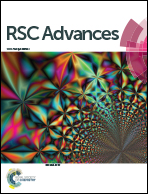Degradation of 2,4-dichlorophenol in wastewater by low temperature plasma coupled with TiO2 photocatalysis
Abstract
Degradation of 2,4-dichlorophenol (2,4-DCP) in wastewater was conducted in a dielectric barrier discharge (DBD) reactor coupled with TiO2 photocatalysis. The main advantage of the system is that ultraviolet (UV) light produced by the DBD and reactive species like ozone (O3) can be used for the treatment of wastewater. In this study, the effect of discharge voltage, initial concentration and initial pH on the degradation of 2,4-DCP was studied. TiO2 and I–TiO2 were introduced to enhance the removal efficiency of 2,4-DCP. We also investigated the effect of adding tert-butanol to probe the role of hydroxyl radicals in the reaction. The results indicated that 2,4-DCP could be removed effectively and hydroxyl radicals played an important role during the degradation process by the low temperature plasma. The removal efficiency of 2,4-DCP with I–TiO2 was better than with TiO2. The degradation efficiency with 10% I–TiO2 was 89.59% after 120 min when the discharge voltage was 75 V, pH 5.32 and 50 mg L−1 was selected as the initial concentration. The removal efficiency of 2,4-DCP decreased with the increasing concentration of tert-butanol because alcohols are excellent radical scavengers that inhibit the generation of hydroxyl radicals during the DBD process. The degradation products of 2,4-DCP were characterized qualitatively and quantitatively using Mass spectrometry and UV-Vis spectroscopy. Besides, the degradation mechanism, the degradation pathway and the structures of intermediate products were also examined and discussed in detail.


 Please wait while we load your content...
Please wait while we load your content...